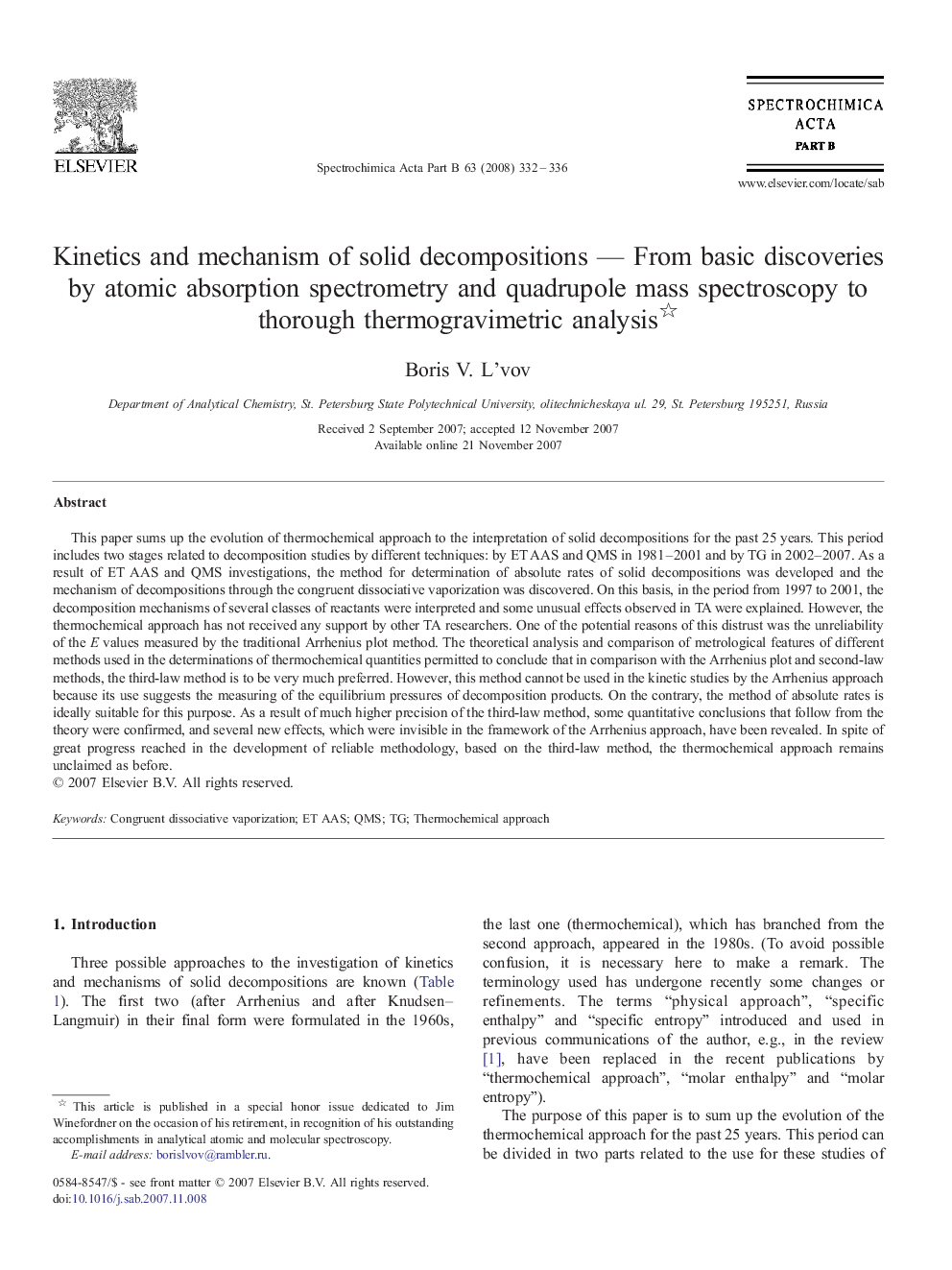| Article ID | Journal | Published Year | Pages | File Type |
|---|---|---|---|---|
| 1241293 | Spectrochimica Acta Part B: Atomic Spectroscopy | 2008 | 5 Pages |
This paper sums up the evolution of thermochemical approach to the interpretation of solid decompositions for the past 25 years. This period includes two stages related to decomposition studies by different techniques: by ET AAS and QMS in 1981–2001 and by TG in 2002–2007. As a result of ET AAS and QMS investigations, the method for determination of absolute rates of solid decompositions was developed and the mechanism of decompositions through the congruent dissociative vaporization was discovered. On this basis, in the period from 1997 to 2001, the decomposition mechanisms of several classes of reactants were interpreted and some unusual effects observed in TA were explained. However, the thermochemical approach has not received any support by other TA researchers. One of the potential reasons of this distrust was the unreliability of the E values measured by the traditional Arrhenius plot method. The theoretical analysis and comparison of metrological features of different methods used in the determinations of thermochemical quantities permitted to conclude that in comparison with the Arrhenius plot and second-law methods, the third-law method is to be very much preferred. However, this method cannot be used in the kinetic studies by the Arrhenius approach because its use suggests the measuring of the equilibrium pressures of decomposition products. On the contrary, the method of absolute rates is ideally suitable for this purpose. As a result of much higher precision of the third-law method, some quantitative conclusions that follow from the theory were confirmed, and several new effects, which were invisible in the framework of the Arrhenius approach, have been revealed. In spite of great progress reached in the development of reliable methodology, based on the third-law method, the thermochemical approach remains unclaimed as before.
